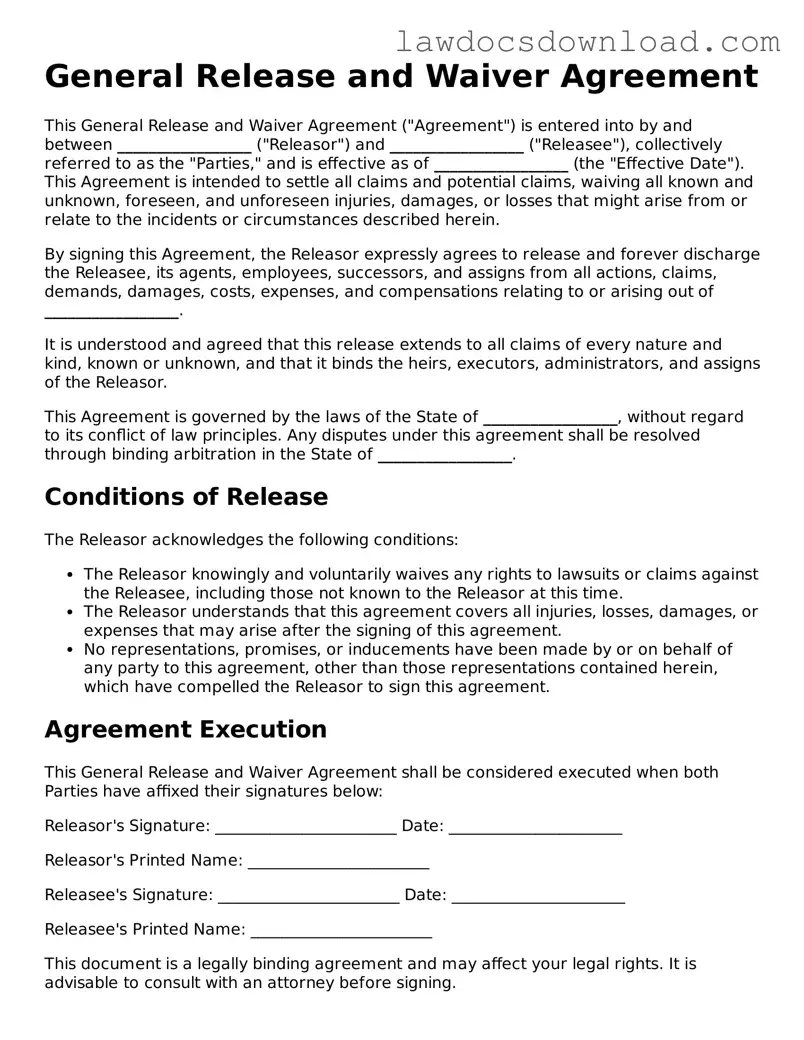General Release and Waiver Agreement
This General Release and Waiver Agreement ("Agreement") is entered into by and between _________________ ("Releasor") and _________________ ("Releasee"), collectively referred to as the "Parties," and is effective as of _________________ (the "Effective Date"). This Agreement is intended to settle all claims and potential claims, waiving all known and unknown, foreseen, and unforeseen injuries, damages, or losses that might arise from or relate to the incidents or circumstances described herein.
By signing this Agreement, the Releasor expressly agrees to release and forever discharge the Releasee, its agents, employees, successors, and assigns from all actions, claims, demands, damages, costs, expenses, and compensations relating to or arising out of _________________.
It is understood and agreed that this release extends to all claims of every nature and kind, known or unknown, and that it binds the heirs, executors, administrators, and assigns of the Releasor.
This Agreement is governed by the laws of the State of _________________, without regard to its conflict of law principles. Any disputes under this agreement shall be resolved through binding arbitration in the State of _________________.
Conditions of Release
The Releasor acknowledges the following conditions:
- The Releasor knowingly and voluntarily waives any rights to lawsuits or claims against the Releasee, including those not known to the Releasor at this time.
- The Releasor understands that this agreement covers all injuries, losses, damages, or expenses that may arise after the signing of this agreement.
- No representations, promises, or inducements have been made by or on behalf of any party to this agreement, other than those representations contained herein, which have compelled the Releasor to sign this agreement.
Agreement Execution
This General Release and Waiver Agreement shall be considered executed when both Parties have affixed their signatures below:
Releasor's Signature: _______________________ Date: ______________________
Releasor's Printed Name: _______________________
Releasee's Signature: _______________________ Date: ______________________
Releasee's Printed Name: _______________________
This document is a legally binding agreement and may affect your legal rights. It is advisable to consult with an attorney before signing.
